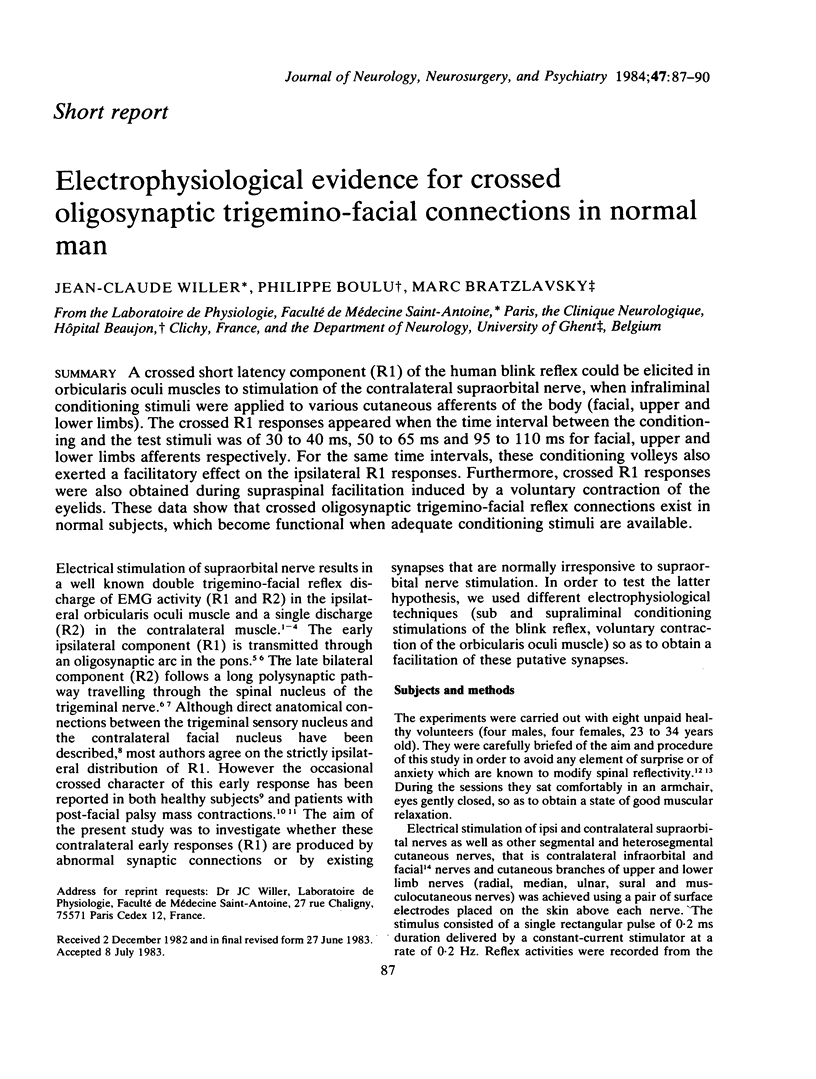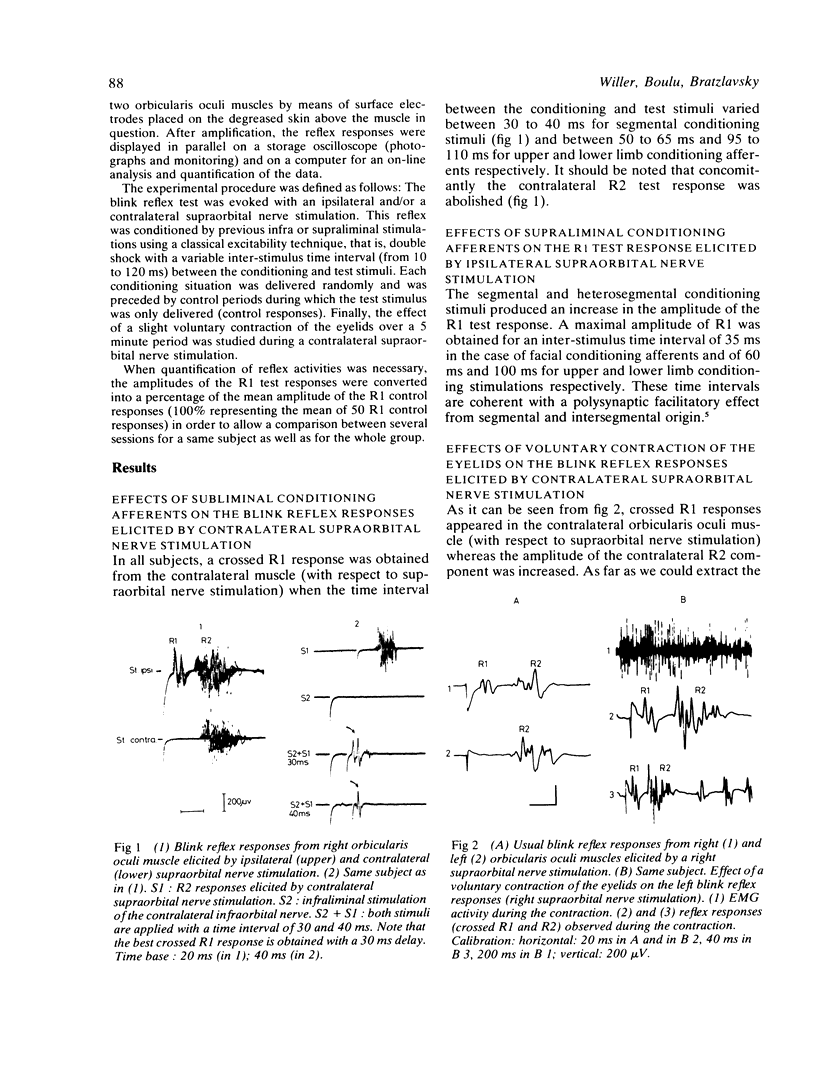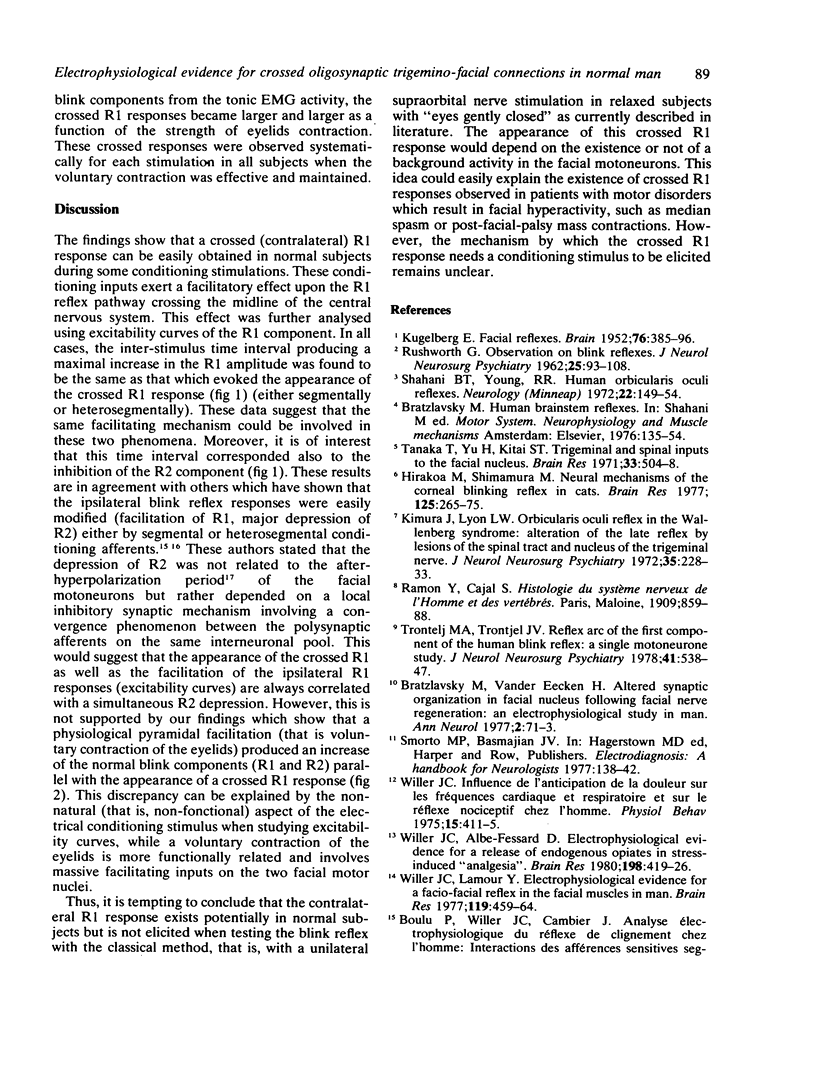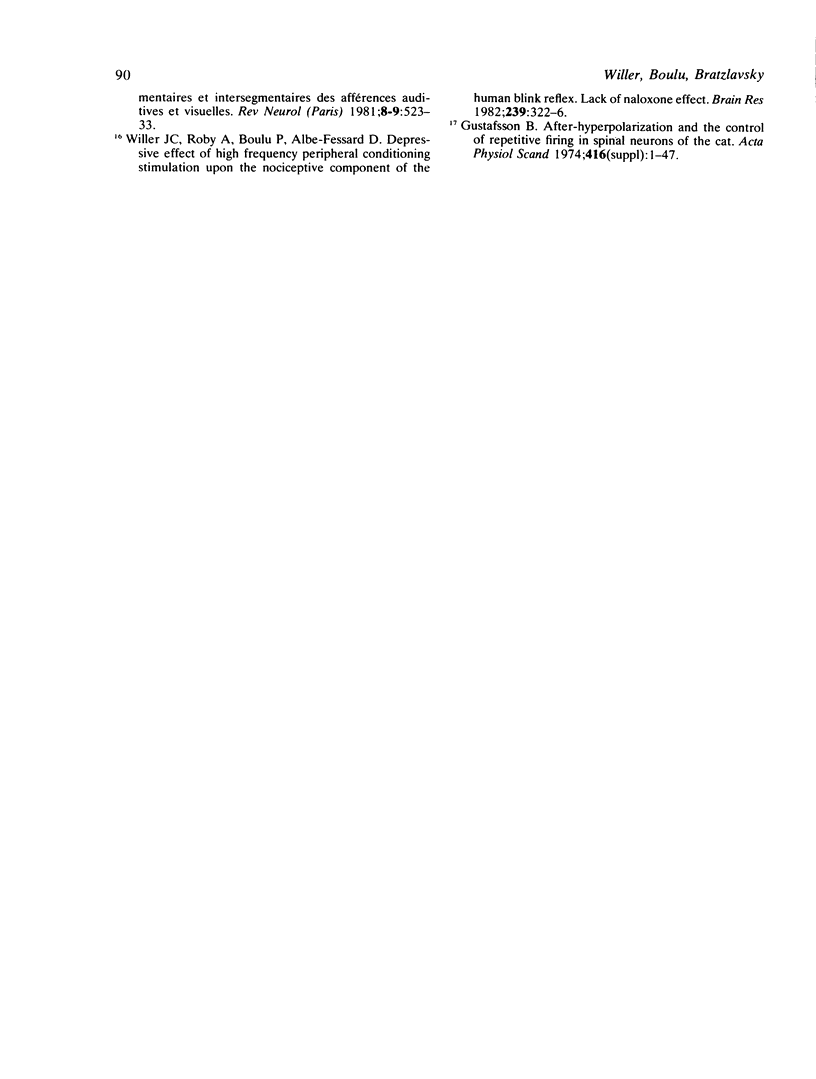Abstract
A crossed short latency component (R1) of the human blink reflex could be elicited in orbicularis oculi muscles to stimulation of the contralateral supraorbital nerve, when infraliminal conditioning stimuli were applied to various cutaneous afferents of the body (facial, upper and lower limbs). The crossed R1 responses appeared when the time interval between the conditioning and the test stimuli was of 30 to 40 ms, 50 to 65 ms and 95 to 110 ms for facial, upper and lower limbs afferents respectively. For the same time intervals, these conditioning volleys also exerted a facilitatory effect on the ipsilateral R1 responses. Furthermore, crossed R1 responses were also obtained during supraspinal facilitation induced by a voluntary contraction of the eyelids. These data show that crossed oligosynaptic trigemino-facial reflex connections exist in normal subjects, which become functional when adequate conditioning stimuli are available.
Full text
PDF



Selected References
These references are in PubMed. This may not be the complete list of references from this article.
- Bratzlavsky M., vander Eecken H. Altered synaptic organization in facial nucleus following facial nerve regeneration: an electrophysiological study in man. Ann Neurol. 1977 Jul;2(1):71–73. doi: 10.1002/ana.410020114. [DOI] [PubMed] [Google Scholar]
- Hiraoka M., Shimamura M. Neural mechanisms of the corneal blinking reflex in cats. Brain Res. 1977 Apr 15;125(2):265–275. doi: 10.1016/0006-8993(77)90620-5. [DOI] [PubMed] [Google Scholar]
- Kimura J., Lyon L. W. Orbicularis oculi reflex in the Wallenberg syndrome: alteration of the late reflex by lesions of the spinal tract and nucleus of the trigeminal nerve. J Neurol Neurosurg Psychiatry. 1972 Apr;35(2):228–233. doi: 10.1136/jnnp.35.2.228. [DOI] [PMC free article] [PubMed] [Google Scholar]
- Piquard F., Schaefer A., Haberey P. Effets de la Perfusion de Glucose, d'Acides Amines ou de Lipides sur le Choix Alimentaire chez le Rat. Physiol Behav. 1975 Jul;15(1):41–46. doi: 10.1016/0031-9384(75)90277-2. [DOI] [PubMed] [Google Scholar]
- RUSHWORTH G. Observations on blink reflexes. J Neurol Neurosurg Psychiatry. 1962 May;25:93–108. doi: 10.1136/jnnp.25.2.93. [DOI] [PMC free article] [PubMed] [Google Scholar]
- Shahani B. T., Young R. R. Human orbicularis oculi reflexes. Neurology. 1972 Feb;22(2):149–154. doi: 10.1212/wnl.22.2.149. [DOI] [PubMed] [Google Scholar]
- Tanaka T., Yu H., Kitai S. T. Trigeminal and spinal inputs to the facial nucleus. Brain Res. 1971 Oct 29;33(2):504–508. doi: 10.1016/0006-8993(71)90126-0. [DOI] [PubMed] [Google Scholar]
- Trontelj M. A., Trontelj J. V. Reflex arc of the first component of the human blink reflex: a single motoneurone study. J Neurol Neurosurg Psychiatry. 1978 Jun;41(6):538–547. doi: 10.1136/jnnp.41.6.538. [DOI] [PMC free article] [PubMed] [Google Scholar]
- Willer J. C., Albe-Fessard D. Electrophysiological evidence for a release of endogenous opiates in stress-induced'analgesia' in man. Brain Res. 1980 Oct 6;198(2):419–426. doi: 10.1016/0006-8993(80)90755-6. [DOI] [PubMed] [Google Scholar]
- Willer J. C., Lamour Y. Electrophysiological evidence for a facio-facial reflex in the facial muscles in man. Brain Res. 1977 Jan 7;119(2):459–464. doi: 10.1016/0006-8993(77)90325-0. [DOI] [PubMed] [Google Scholar]
- Willer J. C., Roby A., Boulu P., Albe-Fessard D. Depressive effect of high frequency peripheral conditioning stimulation upon the nociceptive component of the human blink reflex. Lack of naloxone effect. Brain Res. 1982 May 6;239(1):322–326. doi: 10.1016/0006-8993(82)90860-5. [DOI] [PubMed] [Google Scholar]


